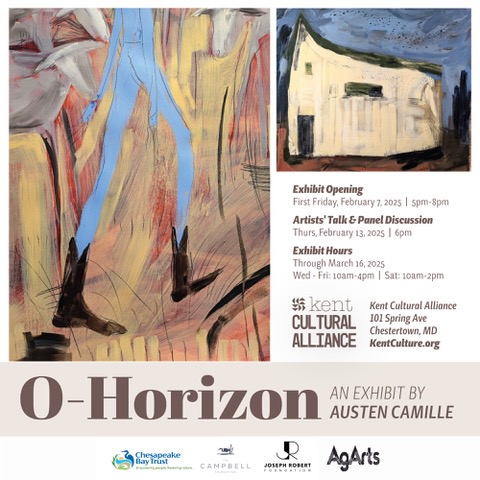by Austen Camille
10
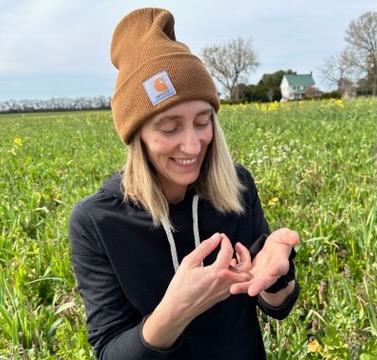
We started the day by spraying herbicide.
I climbed the staircase up into the tractor: hydraulic seat and air
conditioning and four or five screens and a phenomenal number of
buttons and automatic steering connected to GPS and sensor
wires attached to absolutely everything. Everything tracked,
everything accounted for.
A central nervous
system.
And in the midst of all of this technology, all of this
machinery, there is a kind person driving the thing.
C (a farmer) started driving tractor, sprayer, planter when he was
13 years old. While we talk,
he’s switching between steering and letting the sensors
steer,
he’s keeping an eye on all of the nozzles along a 120′
metal wing span,
he’s looking at the ground, checking for animals,
he’s relaying information back to the rest of the team,
he’s making constant, minute adjustments to many things
I do not understand,
and his second child will be born after harvest season,
when he has more time to help his wife.
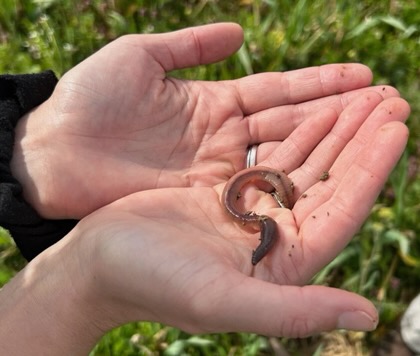
C talks fast, and the machine moves fast. We finish three
fields, making impossibly wide turns, before folding the
wings in and driving slowly – cumbersome now that we’ve
left the field – along the thin road.
Next, I am brought to meet M (a farmer), working the spreader.
The smell of chicken manure, earthy and tangy, stays in my nose
for hours afterwards. Again, I climb up a staircase into the small
house-sized tractor, and this time we move slow.
M talks slowly, deliberately, and we make a slow pass of
the large field, a slow broad turn at the end, another slow
pass of the field, another slow broad turn. The
conversation was quieter (the machine was quieter); M
was born and raised here, lives just down the road in a
stand of beautiful pine trees. I asked him which season he
loved the most, and told me that he loves how his work
changes with each passing season. Perhaps the fall
harvest, but by the time fall is almost through, he’s ready
for winter. Perhaps the spring planting, but by the time
spring is almost through, he’s ready for summer.
Watching a person do something
skillfully
/ feel at home in their actions
/ understand the motions of this
landscape
is a revelation.
13
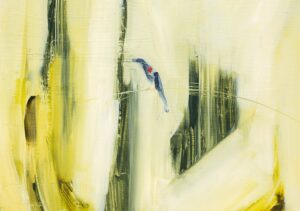
I defended monoculture the other day, something I never thought I
would do. Really, I defended the farmers who have to cultivate
monocultural crops because the system is set up in such a way,
but it was still an odd moment
in the history of my
life.
I was invited to join G (a farmer) running the planter to see
how it was done. He has worked for every generation of
Harborview Farms, hands hardened (doing up buttons is
getting difficult), and we rolled over the cover crops leaving
seeds in our wake.
Planting was perhaps, and unexpectedly so, the
strangest day of these past weeks.
T dropped a bright pink corn kernel into the palm of my
hand
(not a color I am familiar with, when associated with
a seed),
and a bright green one,
and a bright purple one.
This felt harder than riding around in a tractor spraying herbicide.
Something about the corn kernels lying in my hand, shades of
neon. The soybeans an unnatural green. I think it must be the
colors that frightened me a little? And the warning label from the
bag of kernels. Reading the fine print. A strong sensation that the
seed in my hand is in actual fact so far from the seeds that I
understand. Genetically-modified, Round-up Ready, coated in
insecticides, fungicides, and the color of the brand to distinguish it.
Planting usually makes me feel hopeful for the future.
I have this notion in my head that a seed is a pure thing.
It’s the best it can be, evolutionarily-speaking. I think of
seed banks, beautiful and small seeds tucked away for the
future, seed-saving as a form of generational love. (How)
Do these seeds fit into this notion?
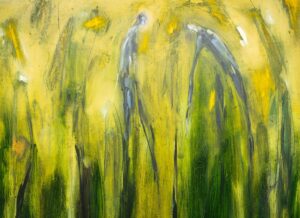
Corn has been genetically modified for over 9000 years. It is what
we call a cultigen, selected for domestication by humans,
mutually sculpting one another.
These seeds are our solution to growth, to hunger.
Each bag contains refuge kernels (refuge: a place of
safety) that are free of chemicals so that certain insects
cannot react and build immunity, cannot decimate entire
fields. Is the kernel a refuge for the insect? Or is the kernel
ensuring that the rest of the crop is our refuge, our safety?
Like everything I am encountering, it seems to be both.
14
Almost as if held in the belly of a bird,
seeds are transported from somewhere in Nebraska,
Indiana, Iowa
to Kent County, Maryland,
cultivated and carried off once more
to the chicken farm down the road
or to the shipping container waiting in Baltimore Harbor,
to go to a port in Brazil
to go to a port in China
to a manufacturing facility where they change form, where
each is pressed for a tiny potent quantity of nutrient,
are put back on a ship to America in this new form
where they will be held in someone else’s body.
18
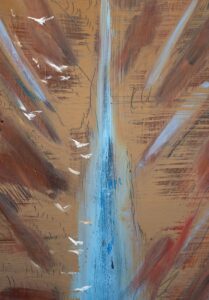
We met just as the sun was rising to go look at the
earthworms; yesterday morning, just after sunrise, T had
seen tens of them on the surface and knew I would want to
see them too
– all nerves and muscles and organs. Extraordinarily
sensitive.
T and I walk slowly and softly, quietly. They can feel
vibrations in their tender bodies from several feet
away, reacting quickly and disappearing into their
burrows.
We don’t see any worms today,
but the way we moved over the field was with an
awareness
of worms, of their homes and their particular
sensory perspective,
and I felt like my body was learning a new way to
listen.
_______________________________________________________________________
Copyright © 2024 by Austen Camille.
Artwork by Austen Camille.
Photographs by John Schratweiser and Vivian Marie Doering.
Austen Camille
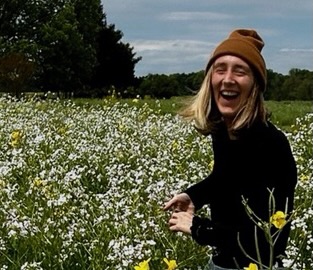
Austen Camille is Canadian-American multidisciplinary artist, writer, builder and gardener. Camille primarily makes site-responsive public work that aims to facilitate relationships with local environments. Camille received their MFA in Painting from the Tyler School of Art and Architecture (Temple University) in 2020.
These poems were written while Camille was in residence with the Kent Cultural Alliance, Chestertown, MD, 2024, and funded in part by AgArts USA.
Camille’s website is www.austencamille.com. For more selections from ‘Listening to a Field through the Window of a Truck,’ click here.

